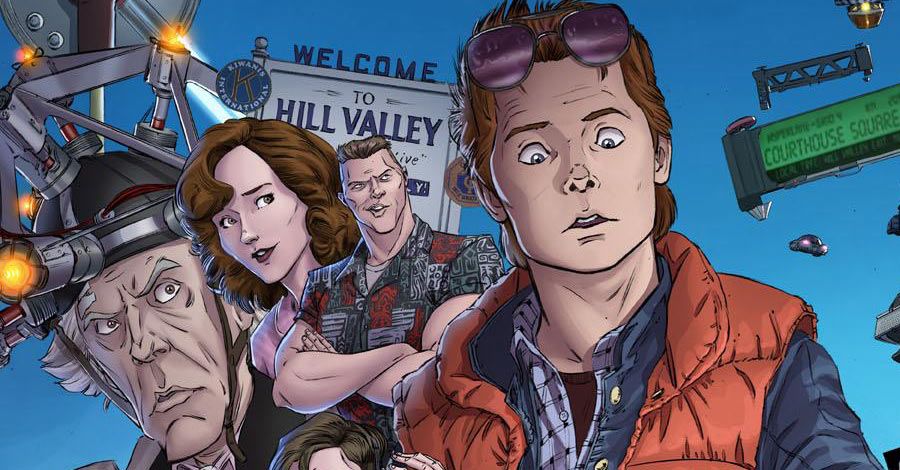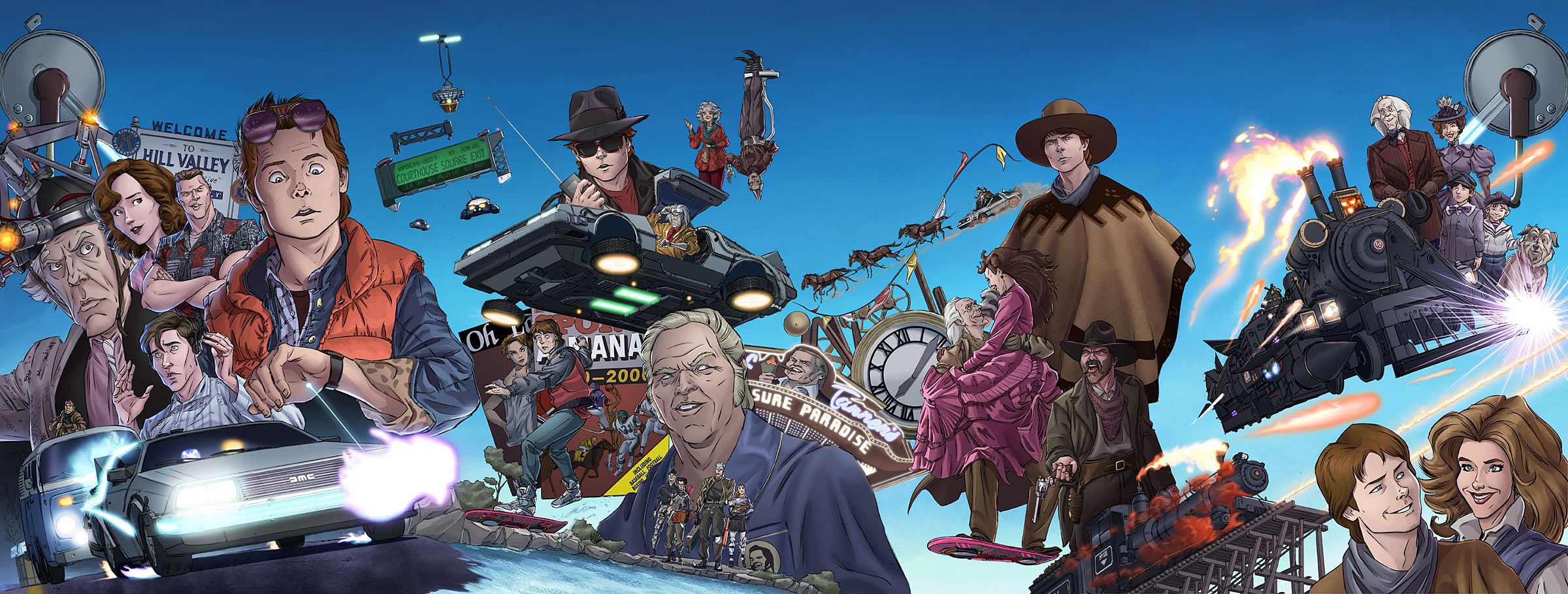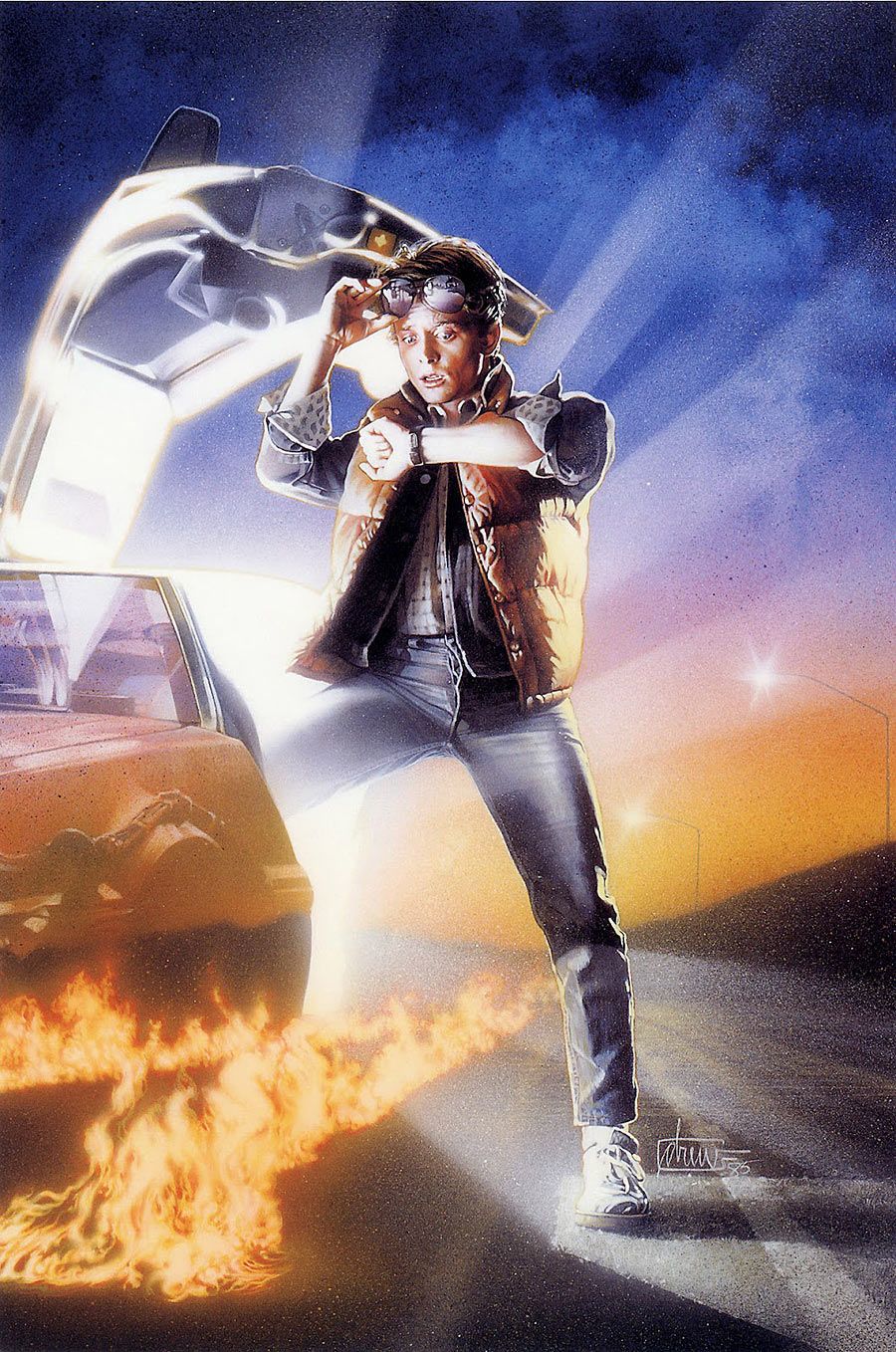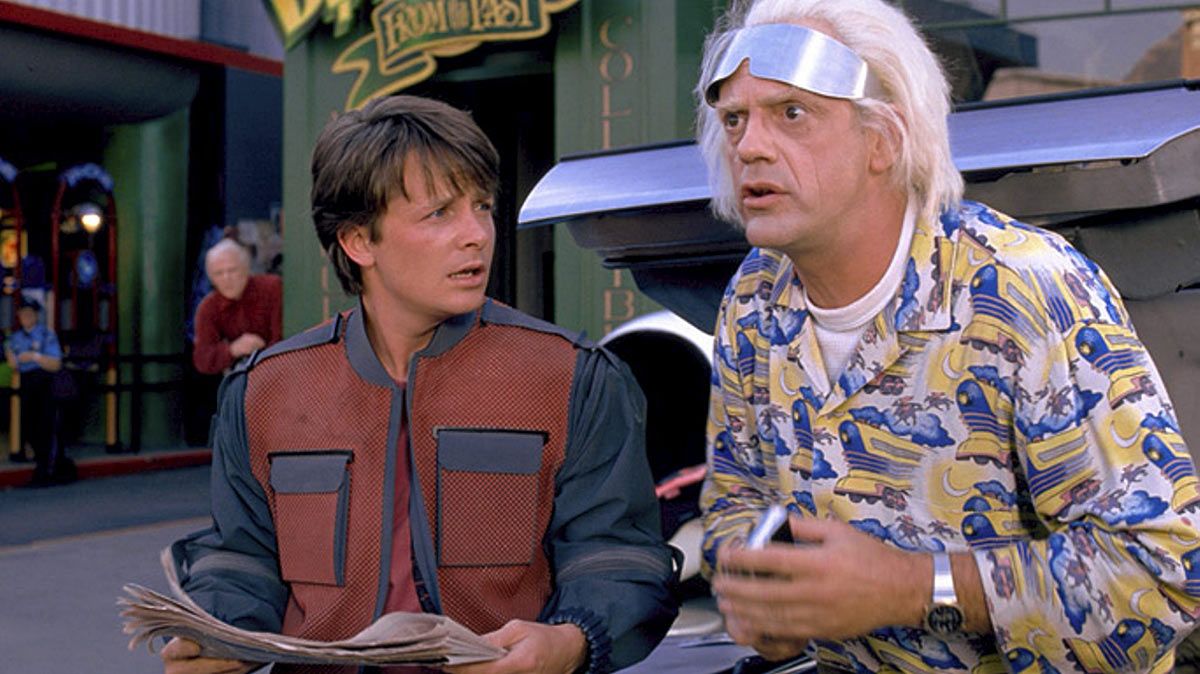Bob Gale and "Back to the Future" are like time travel and a DeLorean -- you can't have one without the other. With IDW announcing a new comic book series based on the beloved film series, it made perfect sense to get the screenwriter on board to oversee the ongoing series announced ahead of preview night at Comic-Con International.
Gale, who has written "Daredevil" and "Amazing Spider-Man" comics in the past will not be shouldering the writing chores alone, however. He's heading up a team that includes IDW veteran writers John Barber ("Transformers") and Erik Burnham ("Ghostbusters"). The idea is for Gale to offer suggestions and oversee the issues which will be broken up into smaller stories penned by Burnham and Barber with a rotating cast of artists lending their styles to the time-weaving tales. The first will feature "Batman '66" artist Brent Schoonover as well as "Ghostbusters" penciller Dan Schoening.
A "Back to the Future" Remake Won't Happen While Zemeckis is Still Breathing
The October release will also answer long-held questions about the film series like how Doc and Marty first met and Doc's work with an infamous group of scientists during World War II before going on to feature different artists drawing a variety of smaller stories that fit within the existing framework of the films.
Gale and director Robert Zemeckis co-wrote "Back to the Future" which debuted in 1985 and introduced the world to the lovable but fiery Marty McFly, wacky scientist Doc Brown, a time traveling DeLorean and one of the most well-put together time travel stories to ever hit the big screen. That was followed by "Part II" in 1989 and "Part III" the following year as well as an animated series that ran from 1991-1992. Many of the characters seen in those films will make appearance in the new IDW series, Gale teases.
CBR News has the exclusive first interview with Gale about the new series' set-up, the timing of the stories, and how fan questions over the last thirty years have played into them.
CBR News: "Back To The Future" has become a cornerstone of pop culture, not just because it created one of the best time travel stories of all time, but did so with characters we all cared so much about. What made you want to return to that world in the comic book format at IDW?
Bob Gale: My understanding is that IDW approached Universal about doing a license deal for a "BTTF" comic. Cindy Chang, Universal's goddess of licensing, called me and asked if I'd be interested. And, by the way, Universal is absolutely great about consulting me about anything regarding "BTTF," as is Amblin/Dreamworks. Because I'm of the school that says, "always take the meeting" (even though it was a phone call), I said I'd have the conversation. And that conversation was with [editor] Tom Waltz and [Editor-in-Chief] Chris Ryall, who were very enthused about exploring how this could be done.
At that point I was ambivalent, but I gave them permission to kick the concept around with a couple of writers. They came back to me with some story pitches, but they were overly focused on time travel and didn't feel like they were really "BTTF." So that got me thinking about what we could do in a comic series that would fit squarely in the "BTTF Universe" but not feel like an attempt to do "BTTF Part 4" or "imitation BTTF" or "BTT: The Clone Saga."
The answer was based in the movies, particularly "Part II," in which we see two sequences that happen "in between" the existing 1955 scenes from "Part 1": The bit in which Biff gets his cleaned-up car back and then harasses Lorraine as she picks up her dress for the dance; and the conceit that there were two Martys doing different things during the dance.
It was also squarely based in all the Superman comics I'd read growing up. In "Superboy," we got the equivalent of a "prequel" series. And Mort Weisinger presented all of those "imaginary stories" in the '60s, in which Lex Luthor killed Superman and all kinds of other wonderfully warped stuff. These, by the way, were part of the original inspiration for the 1985-A story in "BTTF Part II." I also remembered Kurt Busiek's "Untold Tales of Spider-Man" which filled out things that took place between the early adventures.
And then there were the fan questions. Bob Zemeckis and I had been asked many times, "How did Marty and Doc meet?" and "How did Doc's house actually burn down?" So I thought that a series focused on tales in these areas, dealing with the characters as we know them from the movies, answering some of these questions, would be worthwhile. Maybe these stories could enhance or fill in things from the trilogy.
MOVIE LEGENDS REVEALED: Was "Back To The Future" Always "To Be Continued"?


This project sounds incredibly unique in that you're working with John Barber and Erik Burnham on two different stories per issue. How did you decide on that format?
Tom Waltz gets the credit for that. Once we settled on the concept of "Untold Tales and Alternate Timelines," Tom thought we should really embrace the anthology aspect. I like it because we're not tempted to pad out something that doesn't call for a full issue, much less a multi-part story. I also like the idea that if you read an issue and you don't like it, the next issue will have something significantly different.

What is the process the three of you have for breaking the stories and figuring out how they will play out in the series?
The stories in the first issue were things that I immediately thought of, because they deal with things that Bob Zemeckis and I had conceived as part of the personal histories of Marty and Doc. Then I put together a list of ideas that I had and ideas that fans had suggested, and I shared it with John, Erik and Tom. I said, "See what sticks to your ribs and let's kick those ideas around." And between e-mail and phone calls, that's what we've been doing. I want this to be a collaborative process because I know that having John and Erik invested in this will lead to better stories. And both of them are a pleasure to work with.

There will also be a rotating group of artists, starting with Brent Schoonover and Dan Schoening, on the series. Is there a particular style or aesthetic you're looking for for the whole run or more of a whatever-fits-the-story kind of thing?
It's the latter. Tom is really the prime mover on that, because he knows the talent far better than I do. That said, we all want to keep a light-hearted tone. This is a general audiences book and the art will reflect that.

Can you talk a bit about what those actual stories will be as the series kicks off and which familiar faces might be showing up?
In the first issue, our lead story will recount how Marty and Doc first met in 1982. The second story shows how Doc got involved with the Manhattan Project during World War II. John came up with a clever framing device which we'll use throughout the series which involves Doc's family from the end of "Part III," and the first story features someone you may not have expected to see.
As we progress, we'll try to use characters from the movies or their relatives whenever it makes sense, as well as include "easter egg" trilogy references. In #2, we'll pose an answer to the question of how Doc's house burned down.
You've already worked on some of comics' heaviest hitters with Daredevil, Batman and Spider-Man, would you say that's more or less intimidating than returning to Marty McFly and company?

It's always intimidating when you deal with characters that the public is already invested in. Even though I co-created all the "BTTF" characters, I still have to keep them true to the way they're perceived. But certainly "BTTF" is much easier for me because I know the characters and their world far better than I know decades of Batman, Spider-Man and Daredevil continuity.

What major elements or themes from the film are you most looking forward to exploring further in the comic?
The characters are the essence of any great story or series, and I hope that people will enjoy revisiting the "BTTF" characters as much as I am. John said something I really appreciated after he read my sketch of the first story, which included some dialogue: "It really feels real; like it's part of the actual universe of the movies, not a cast-off thing. Hearing the characters speak again is a lot of fun."

Have you talked to Robert Zemeckis about the comic at all? If so, what did he think? Might we eventually see his name on the comic cover?
I haven't discussed it in any great detail with him yet because I want him to experience the first issue the way everyone else will. As to seeing his name on a cover, I'll quote the distinguished scientist, Dr. Emmett L. Brown: "You never know what the future may bring!"
To see exactly what the first issue of "Back To The Future" #1 brings, check your local comic shop in October.




